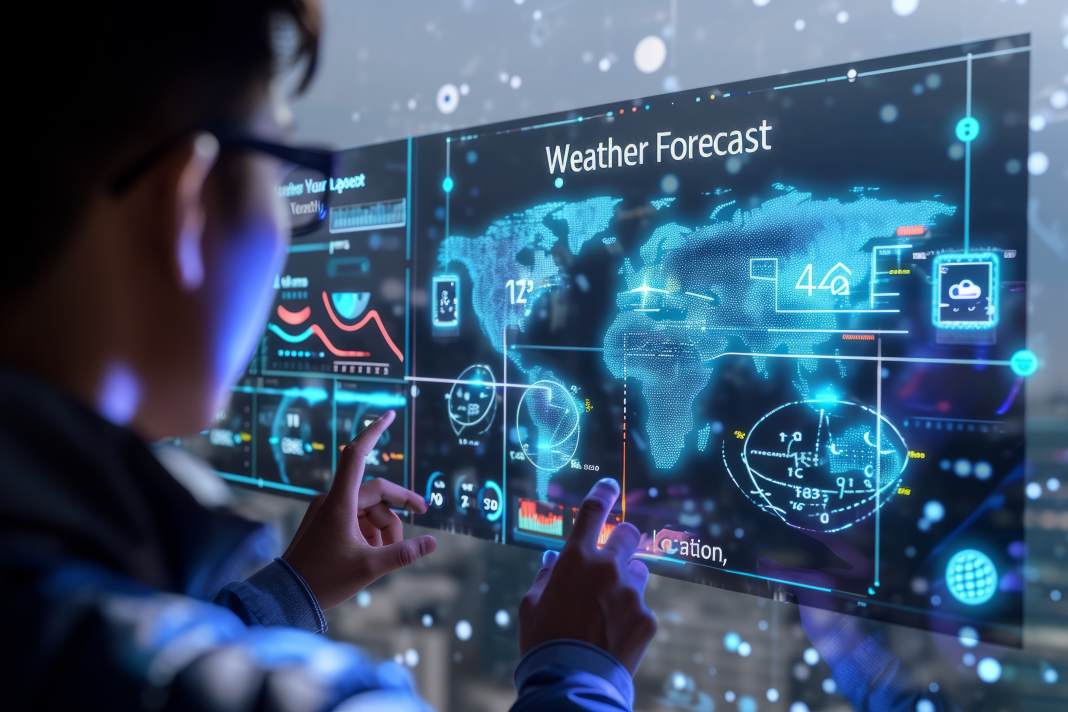Climate change: New supercomputer to provide better warnings of extreme weather
Morten Strauch
· 27.09.2024





The result of five years of collaboration between the national weather services as part of the United Weather Centres West (UWC-West) marks a significant advance in meteorology. Thanks to the increased computing power of the supercomputer, weather forecasts can be produced not only with a higher level of detail, but also for a much larger area than before.
The new weather model covers an area from eastern Greenland to southern Italy and divides the geographical area into 2 km squares compared to the previous 2.5 km grid of the previous version. The model also represents the atmosphere vertically in the form of 90 levels, which corresponds to an increase of 38% and leads to a significantly better representation of the meteorological parameters over the entire area. The new model is also run every hour, whereas with the old computer capacity it could only run every three hours. The supercomputer is also expected to deliver improvements in terms of uncertainties. To this end, forecast models have so far been started with slightly different initial conditions. With the new model, the number of runs is to be doubled in order to achieve even greater certainty in the forecast.
You may also be interested in these articles
Even if Germany is not involved in the international shoulder-to-shoulder dialogue, there will certainly be servers in the future where the data can be accessed due to the European open data policy. According to Sebastian Wache from WetterWelt, the UWC-West will ultimately be another model that can be used for the company's own forecasts. "We will have to see whether it is better than the one operated by the DMI or DWD or that of the European Centre for Medium-Range Weather Forecasts (ECMWF) - but any development in this direction will help to improve the forecasts." With its ICON-D2 model, the DWD already has one that offers similar performance, but only with a focus on Germany. Many Baltic Sea sailors travelling in Danish waters already use the DMI app.
Respond better to extreme weather to protect life and property
Thomas Kjellberg, Deputy Director of the DMI: "Understanding weather and climate has never been more important. The latest reports from the Intergovernmental Panel on Climate Change (IPCC) and the World Meteorological Organisation (WMO) show that climate change is already causing extreme weather such as heatwaves, floods and heavy rainfall around the world. These events are becoming more frequent and intense due to man-made global warming. The experts who made this project possible recognise that by working together, the four national institutes can now better respond to extreme weather to protect lives and property and make decisions as our climate changes."
Marianne Thyrring, Director of the DMI: "By pooling the expertise from our four countries, we can prepare for the future more quickly and efficiently. The launch of our joint system is the culmination of five years of intensive computer and modelling work between the four institutes. It is not only a technical achievement, but also a confirmation that pooling expertise and experience can lead to greater things. My colleagues in Ireland, Iceland and the Netherlands and I are convinced that by working with UWC West we are paving the way for new ways of working in weather services."
Supercomputer utilises hydropower and geothermal energy
The supercomputer, which is operated in Iceland, utilises Icelandic hydropower and geothermal energy sources. These sustainable energy sources contribute significantly to reducing operating costs and minimising the carbon footprint of the weather institutes.

